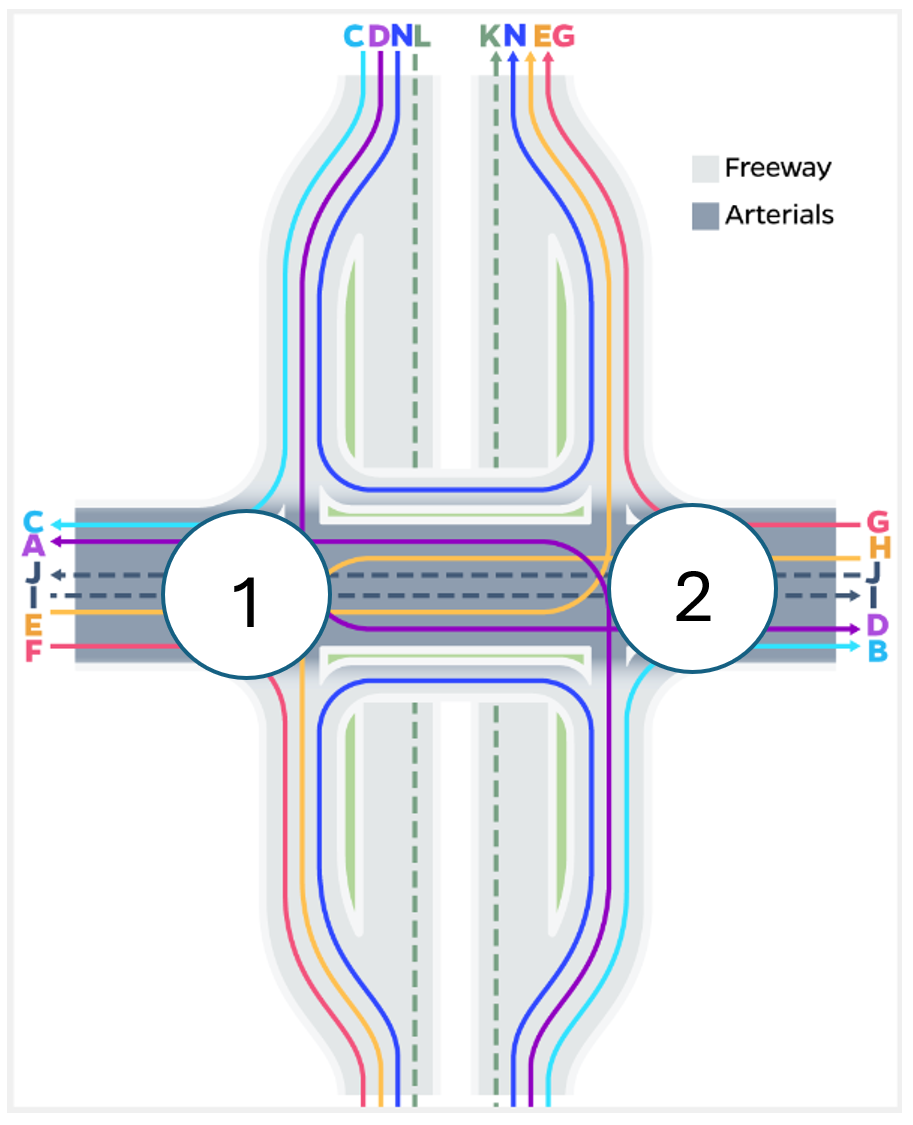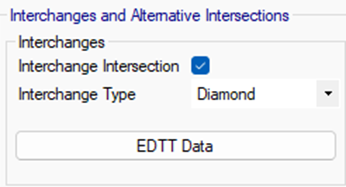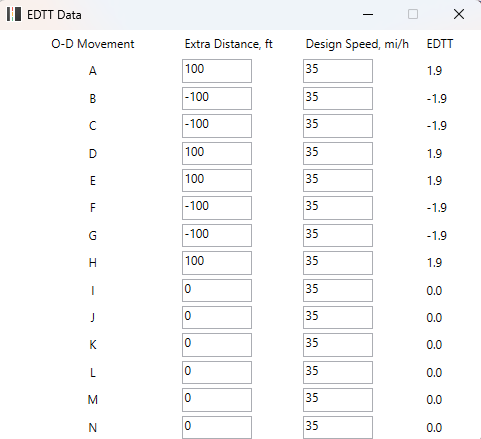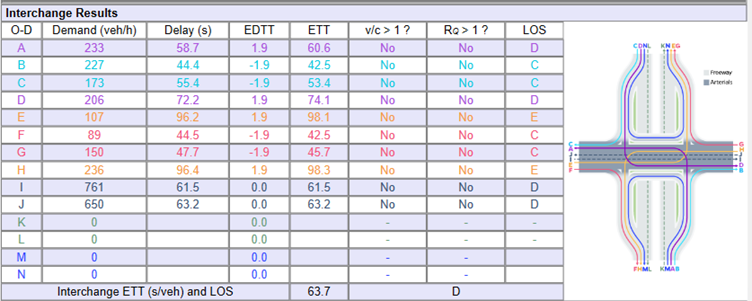Chapter 23 of the 7th Edition of the Highway Capacity Manual presents the methodology to evaluate different interchanges. This method consists of the estimation of experienced travel time (ETT) for each Origin Destination and is computed through Equation 23-1 of the same Manual.

Where di is the control delay experienced by the i movement and EDTT is the additional distance travel time.
Although this method might seem complex, its application is easy through the Highway Capacity Software (HCS). Users can evaluate various interchanges, including Diamond, Diverging Diamond, SPUI, and Parclo (A2Q, A-4Q, B-2Q, B-4Q, AB-2Q, and AB-4Q) using HCS Streets.
Step 1
To design an interchange in HCS, create the signalized intersections on HCS the intersections must follow the preselected forward direction. The figure below shows an example of a Diamond interchange with EB forward directions selected.

Diamond interchange with EB forward directions
Step 2
After creating the interchanges, the user must define the intersection as an “Interchange Intersection” and select the appropriate interchange type under Detailed Input Data. If the desired interchange has two signalized intersections this tag must be selected on both intersections

Step 3
Next, fill out the EDTT data under Interchanges and Alternative Intersections

EDTT Data option menu
Results
Finally to check on the results of the interchange analysis go to Reports and select Interchange Reports.


